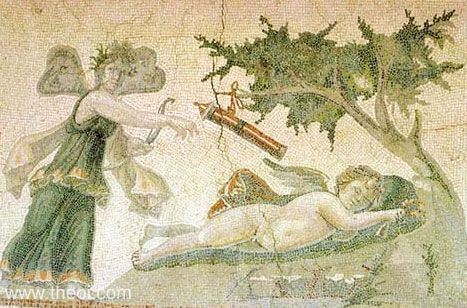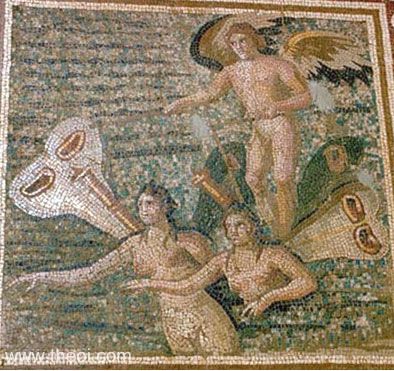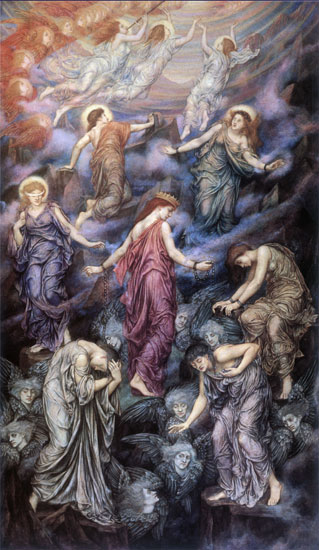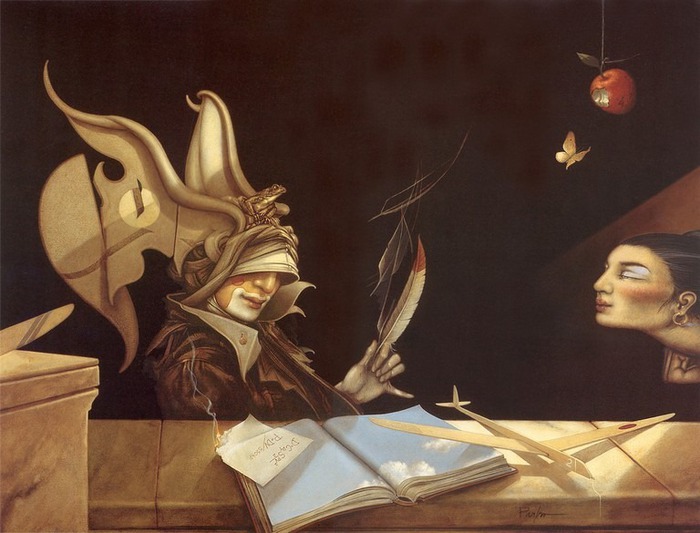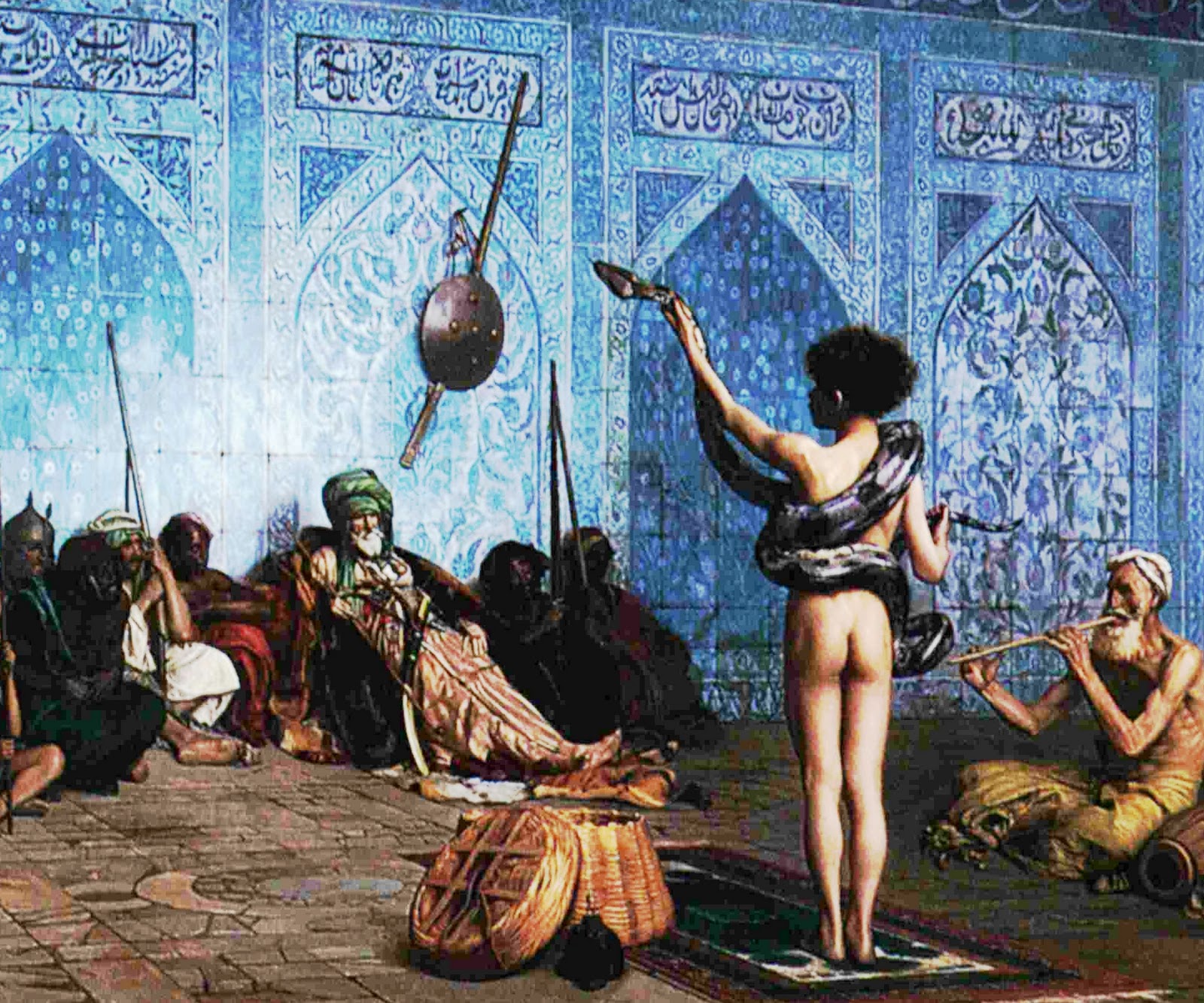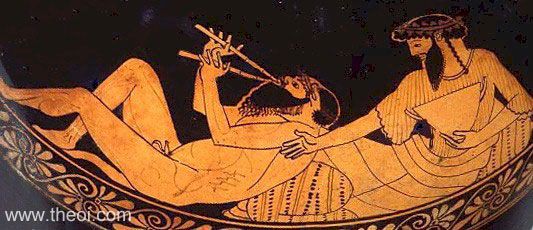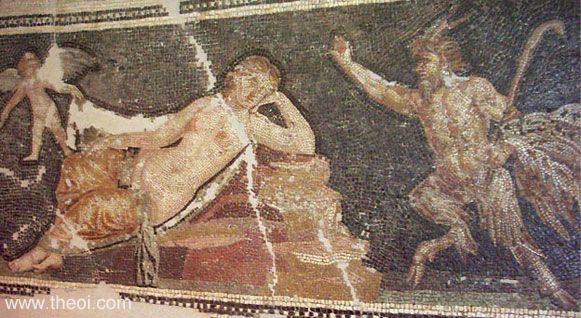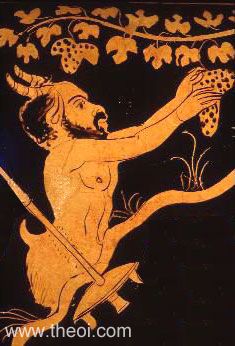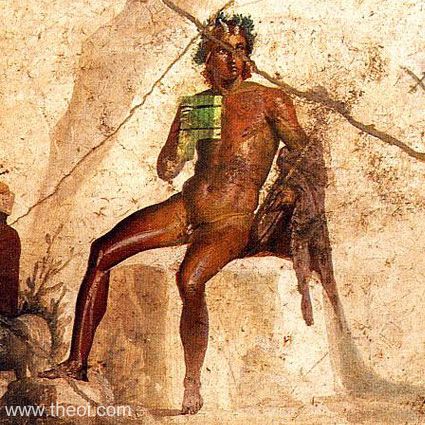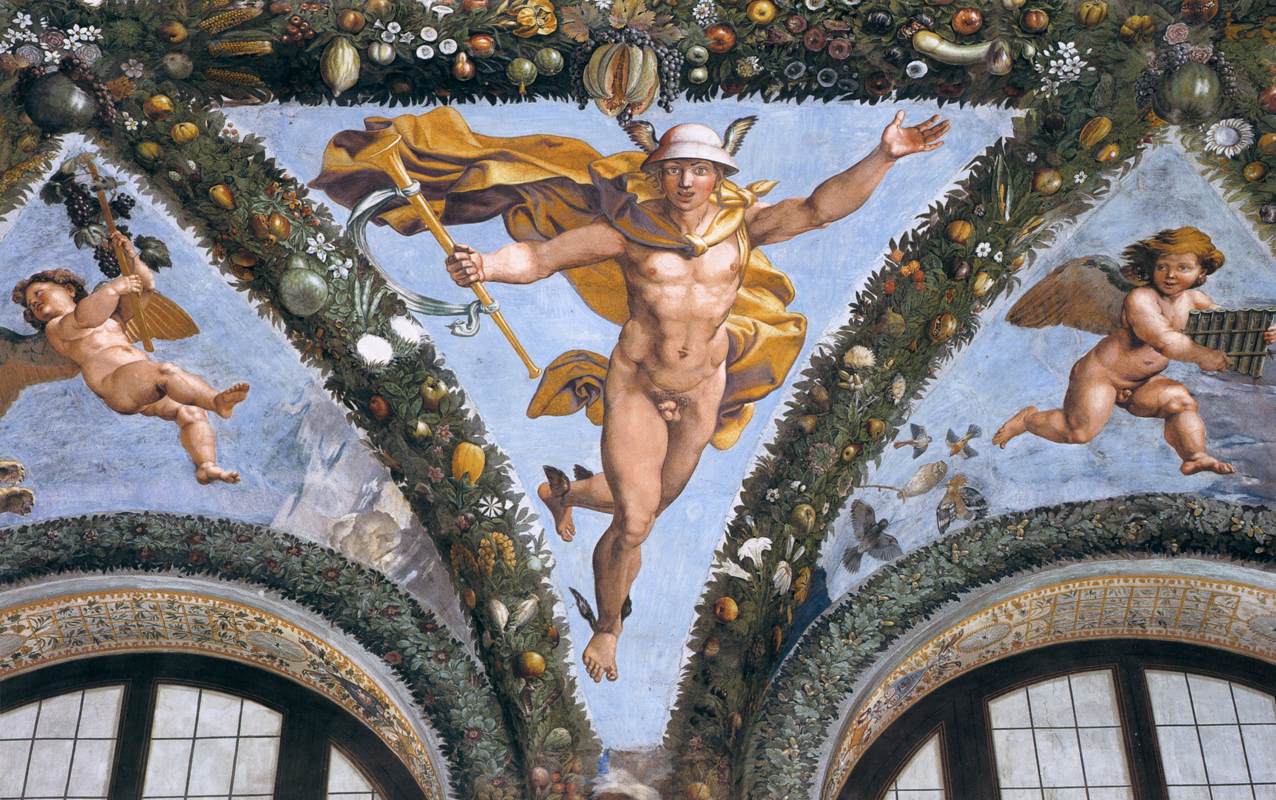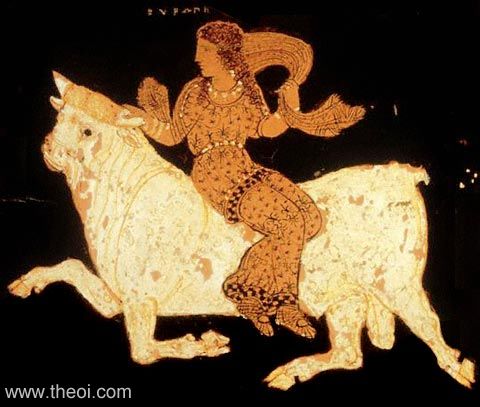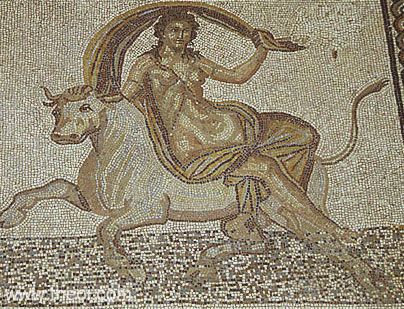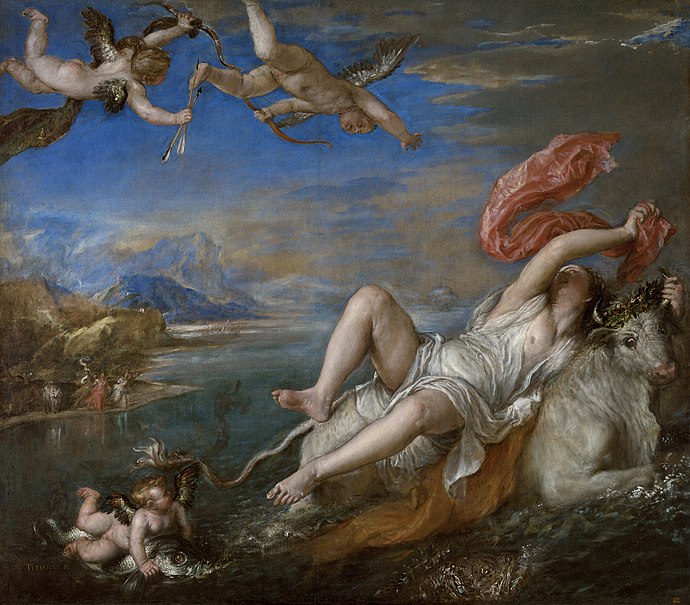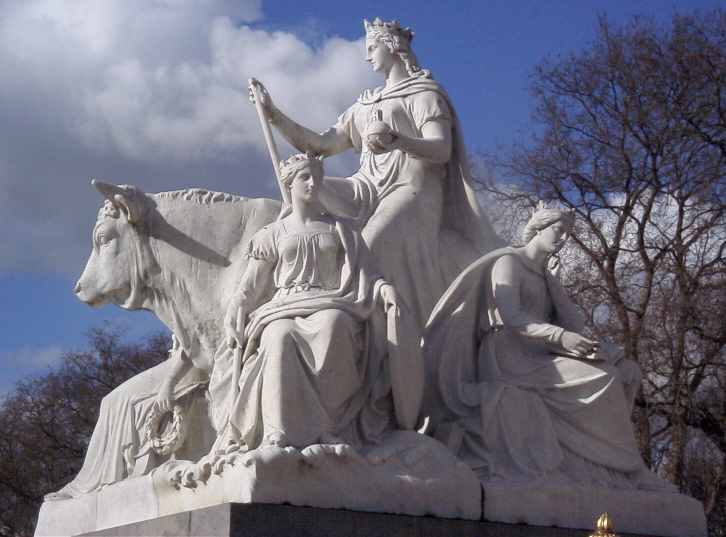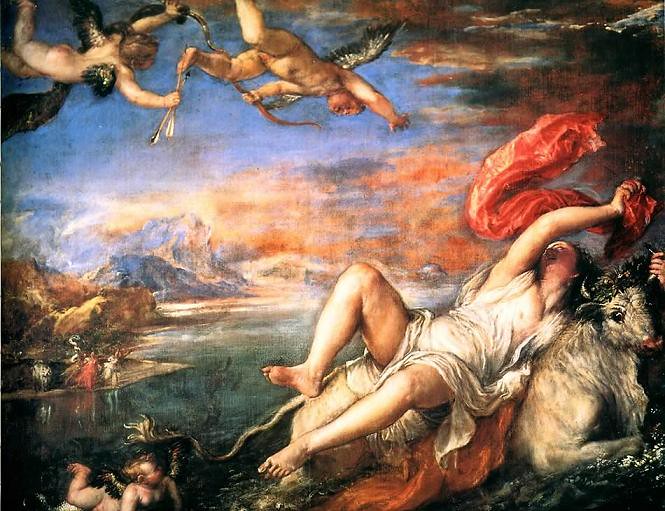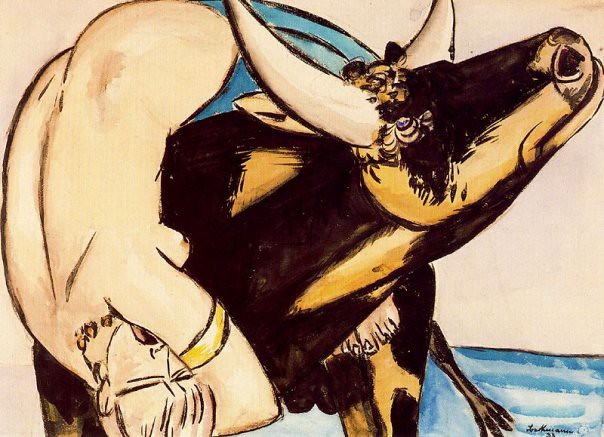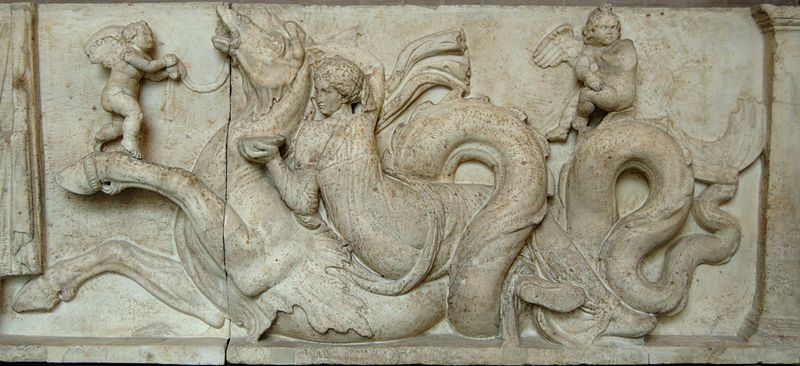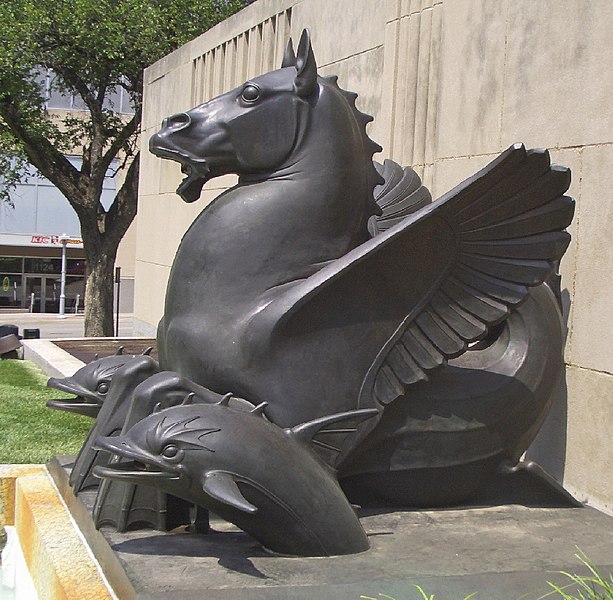MORTAL LOVES (WOMEN)
ALKMENE A Lady of Thebes in Boiotia (Central Greece) who was seduced by Zeus in the form of her own husband. She bore twins: Herakles by Zeus and Likymnios by her husband Amphitryon.
ANTIOPE A Lady of Thebes in Boiotia (Central Greece) who was seduced by Zeus in the shape of Satyros. She bore him twin sons Amphion and Zethos which were exposed at birth.
DANAE A Princess of Argos (in Central Greece) who was imprisoned by her father in a bronze tower. Zeus seduced her in the form of a golden shower, and she gave birth to a son, the hero Perseus.
DIA A Queen of the Lapith tribe of Thessalia (in Northern Greece), wife of King Ixion. According to some, she was seduced by Zeus, and bore him a son Peirithoos (but others say, the father was her husband Ixion). [see Family]
ELARE A Princess of Orkhomenos (in Central Greece) who was loved by Zeus. In fear of the wrath of Hera, he hid her beneath the earth, where she gave birth to a son the Gigante Tityos.
EUROPA A Princess of Phoinikia (Phoenicia in West Asia) who was abducted to Krete )in the Greek Aegean) by Zeus in the form of a bull. She bore him three sons: Minos, Sarpedon and Rhadamanthys.
KASSIOPEIA A Lady of Krete (in the Greek Aegean) who bore Zeus a son named Atymnios. [see Family]
LAMIA A Queen of Libya (in North Africa) who was loved by Zeus. When the jealous Hera stole her children by the god - Herophile and Akhilleus - she was driven mad with grief.
LAODAMEIA A Princess of Lykia (in Asia Minor) who was loved by Zeus and bore him a son, Sarpedon. [see Family]
LEDA A Queen of Lakedaimonia (in Southern Greece) who was seduced by Zeus in the form of swan. She laid an egg from which were hatched the Dioskouroi twins - one Polydeukes was the son of Zeus, the other Kastor the son of her husband Tyndareus. According to some, she was also the mother of egg-hatched Helene (though others say this egg was given her by the goddess Nemesis).
LYSITHOE A woman who bore Zeus a son named Herakles (a man with the same name as the famous hero). [see Family]
NIOBE A Princess of Argolis (in Southern Greece). She was the very first mortal woman loved by Zeus, and bore him two sons: Argos and Pelasgos (though according to others Pelasgos was a son of Poseidon or Earth-Born).
OLYMPIAS An (historical) Queen of Makedonia, and mother of Alexandros the Great. According to legend, her son was fathered by the god Zeus.
PANDORA A Princess of the Hellenes, one of the daughters of King Deukalion, surviver of the Great Deluge. She was loved by Zeus and bore him sons Latinos and Graikos. [see Family]
PROTOGENEIA A Princess of the Hellenes, one of the daughters of King Deukalion, surviver of the Great Deluge. She was loved by Zeus and bore him a son Aithlios. [see Family]
PYRRHA The wife of King Deukalion of the Hellenes, who with her husband survived the Great Deluge. According to some, her first born son, Hellen, was fathered by Zeus rather than Deukalion. [see Family]
PHTHIA A girl from Aegion in Akhaia (southern Greece). Zeus seduced her in the guise of a pigeon or dove.
EURYMEDOUSA A Princess of Phthiotis (in Northern Greece) who was seduced by Zeus in the form of an ant. Their son was named Myrmidon (Ant-Man).
KALLISTO A Princess of Arkadia (in Southern Greece) who was seduced by Zeus in the guise of the goddess Artemis. She was transformed into a bear by a wrathful goddess into a bear and in this form bare a son named Arkas.
KALYKE A Queen of Elis (in Southern Greece), the wife of King Aithlios. She was the mother by Zeus (or by her husband Aithlios) of Endymion. [see Family]
SEMELE A Princess of Thebes in Boiotia (Central Greece) who was loved by Zeus, but through the machinations of Hera was consumed by the heat of his lightning bolts. Zeus rescued their unborn son, Dionysos, from her body and sewed him up in his thigh until he was old enought to be born.
THYIA A Princess of the Hellenes, one of the daughters of King Deukalion, surviver of the Great Deluge. She was loved by Zeus and bore him sons Magnes and Makedon. [see Family]
(4)
MORTAL LOVES (MEN)
GANYMEDES A Prince of Troy (in Asia Minor) who was abducted to Olympos by Zeus in the form of an eagle to be his lover and the cupbearer of the gods.
http://www.theoi.com/Olympios/ZeusLoves3.html



 Reply With Quote
Reply With Quote
 Is it the only explanation of the themes painted by many painters through centuries?
Is it the only explanation of the themes painted by many painters through centuries? 


 I wouldn’t take it seriously if somebody has tried to make assumption what I think or feel.
I wouldn’t take it seriously if somebody has tried to make assumption what I think or feel. 
